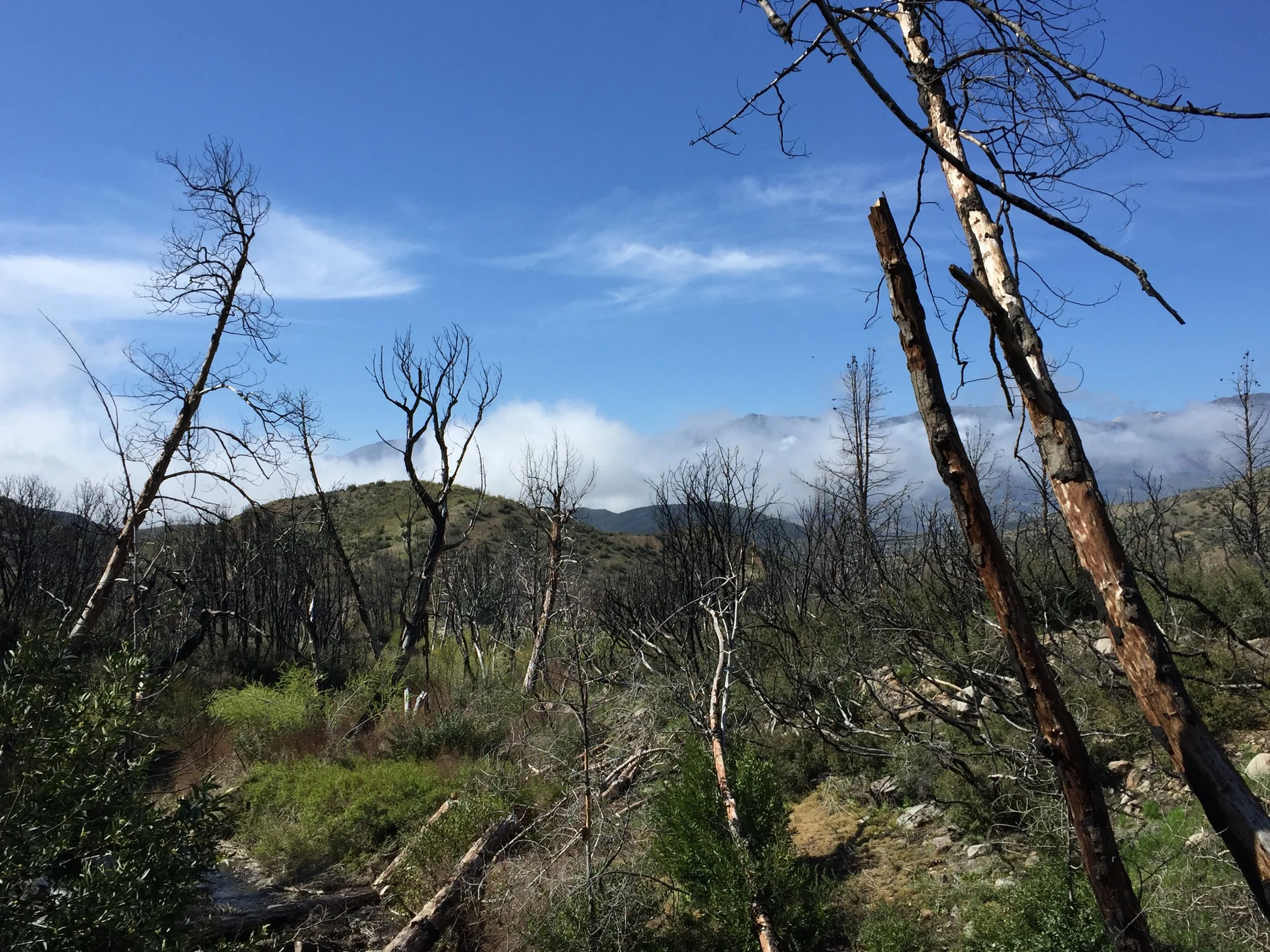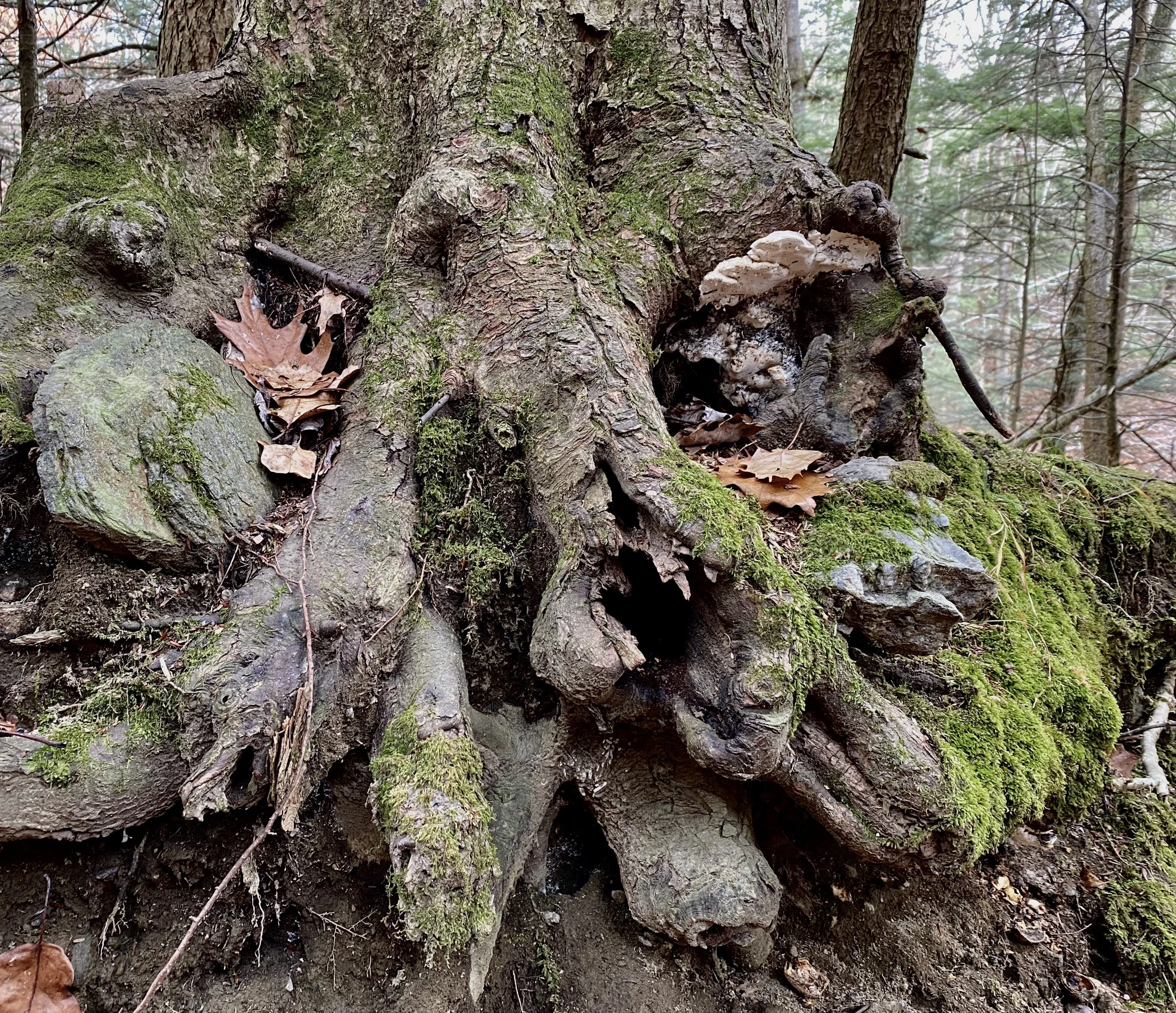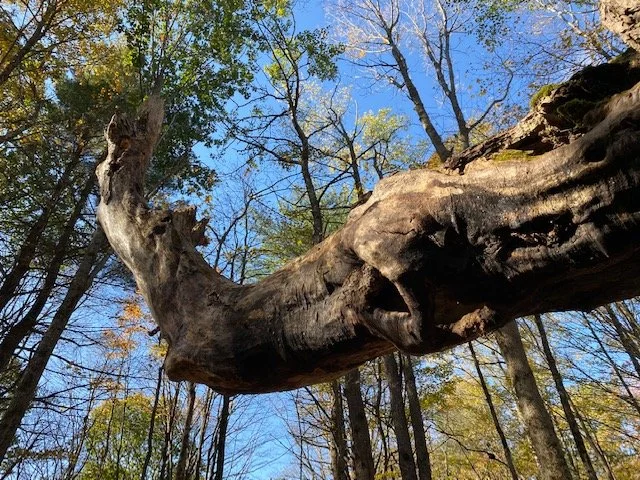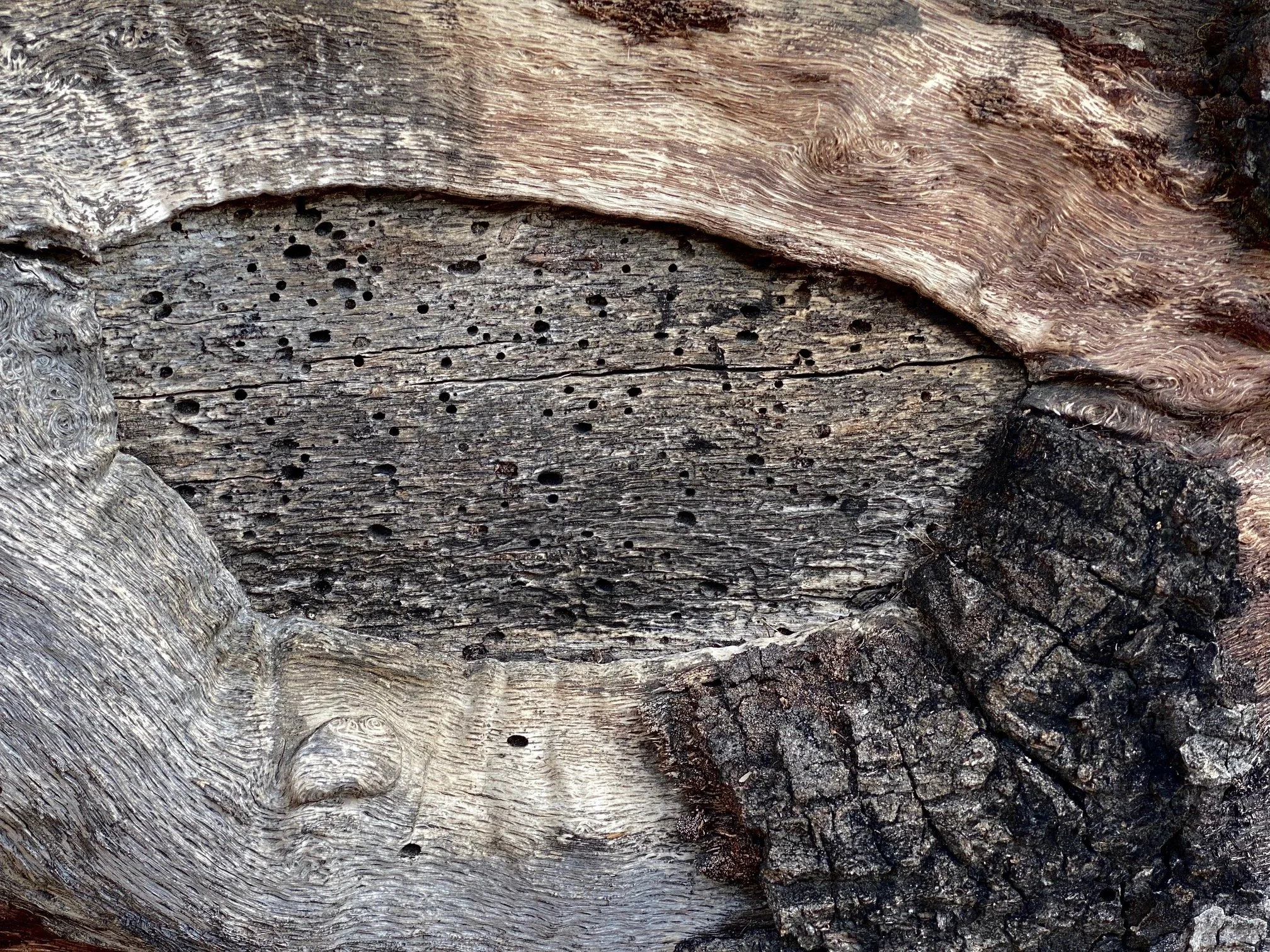The Legacy of Trees
Dying canyon Live Oak in ojai, california
When someone enters for the first time into my kitchen, their eye is invariably drawn towards the ceiling. Here, they are greeted by rough, textured beams with an almost timeless feel. Originally split lengthwise like Lincoln logs they, like the ever so solid chestnut tree beams also revealed in our house, form the backbone of this 18th century farm house. Some, such as the pines and cherry trees in the kitchen, still hold their peeling bark. Perhaps the builders were in too much of a rush to bother to strip it off. A random gift for future generations.
I have come to appreciate more and more how these sturdy old trees, growing before the American Revolution, have been doing the job of holding up my house for over two centuries. After all, our home, Seekonk Farm was built in 1789. They make for a small legacy. And, I’ve come to especially treasure them since they haven’t succumb to the two fires in our home during our lifetime. A different story awaited me when I recently visited the West Coast after a season of fires — even from a few years back as in the case of Ojai, California.
Remnants of a california fire blaze
Often, when back on the East Coast, I take a walk in the woods, I’m invariably drawn towards old stone walls and decaying trees. I love how trunks take on a life of their own while also providing for other forms of life such as worms to woodpeckers. With their exposed roots, they serve as a platform for moss, lichen as well as fungi such as beautiful and often colorful shelf mushrooms aka conks that also grace living trees. Thanks to mycorrhiza, they will one day return to the soil.
Recently, upon spending time in the small town of Ojai, California nestled in the Topa Topa mountains, I was struck by the sight of some barely surviving canyon live oaks or Quercus chrysolepis. While the term “live” may hold an ironic twist here, it refers to how, unlike oak trees back home, they retain their foliage throughout the year. As I witnessed, many of these native trees, while quite resilient, simply cannot survive the stress from the extreme and prolonged drought that has plagued this part of the country. Their more desiccated leaves remind me of large brown confetti. Seeing their withered branches, some collapsed on the ground was like walking in a graveyard. Here, my hope is to acknowledge their tragic beauty at various stages of life - and death.


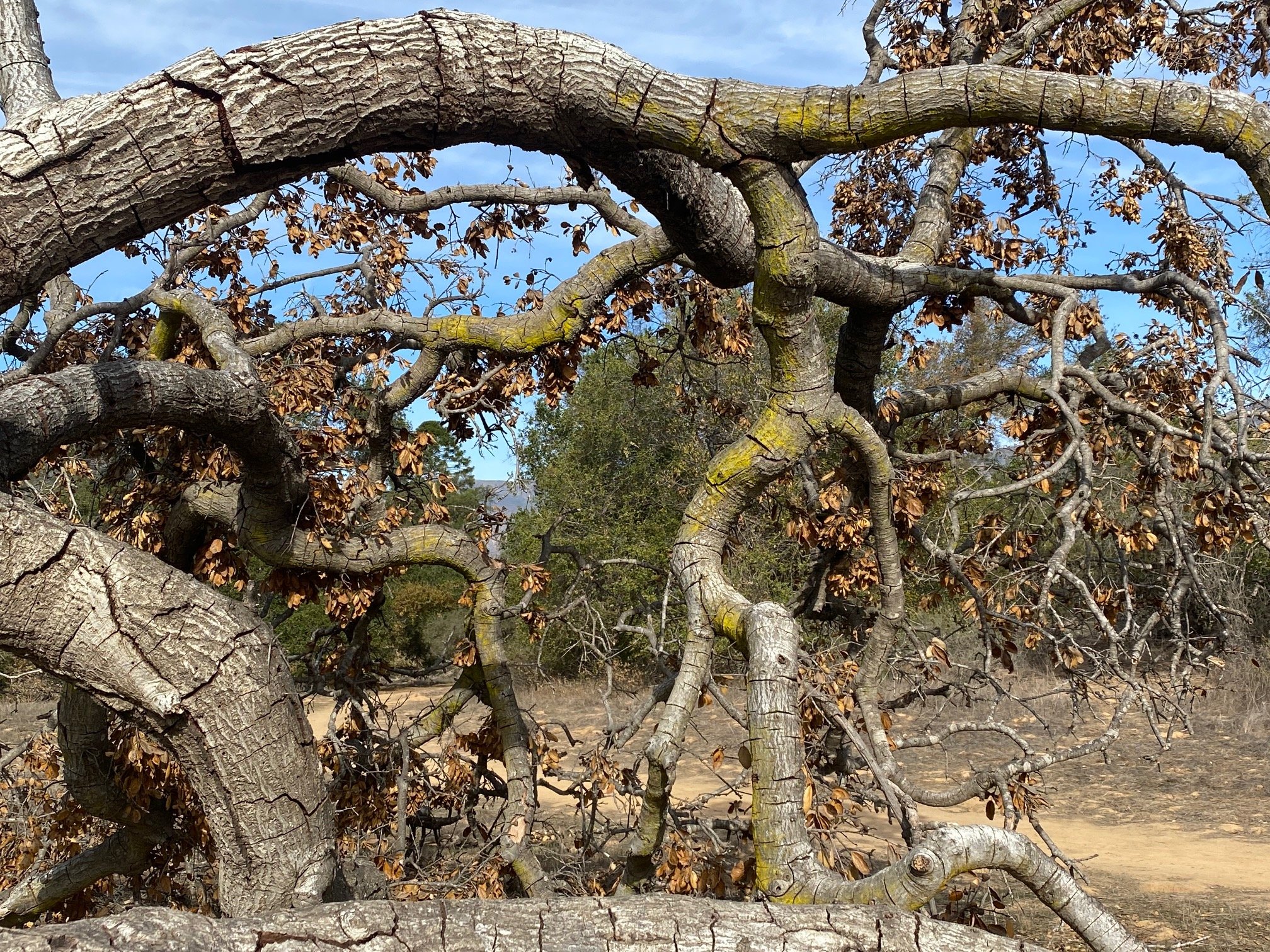


Thus, back in November when I took a hike in Ojai and was witnessing their demise due to environmental stresses, I was also reminded of the chestnut trees that, among so many other things, made for cross beams in New England homes. These once thriving and prevalent American chestnut trees, Castanea dentata of the beech family, no longer grace our woodlands. They make for a reminder of species ravaged by disease: the chestnut blight. In the first half of the 20th century, this invasive fungus from introduced Chinese chestnuts, decimated close to four billion trees in the US. While less devastating in Europe, other chestnut tree species were also affected.
The following photographs I recently took from Massachusetts to California and Hawaii reveal the sculptural legacy of trees. To me, they remain strikingly beautiful. In the first two below they evoked for me a muscular arm in the Berkshires and then a crocodile in Kauai. The last image is of two eucalyptus trees that crashed from a cliff onto a beach in Santa Barbara.


